
Бесплатный фрагмент - Brain evolution. New human species
Preface
“The uniqueness of the work of consciousness lies in the fact that it likes to study its own activity.”
Thanks to advances in technology and the advent of neuroimaging equipment, we have already learned a lot about higher cognitive functions, and more discoveries are yet to be made.
In this book, I will try to reveal how the human brain changes evolutionarily.
Studies have shown that in the future, a person’s perception of the world around him will significantly change, cognitive and intellectual abilities will improve many times over.
This discovery represents an important step in understanding the functional development of the brain and could have crucial implications for the fields of medicine, psychology, education and shaping the future of all humanity.
However, it should be noted that the path to these discoveries was not easy and involved many experiments and scientific research. Let me walk you through this fascinating process.
Nature, in its infinite wise design, has endowed the human brain with a unique potential that we are only just beginning to comprehend. Such a complex organ, capable of higher forms of cognitive activity, keeps secrets, revealing which, we can not only better understand ourselves, but also open up new horizons of unlimited possibilities of the mind itself.
Studies of the effects of mental practices on the brain have shown how deeply we can penetrate into our own mental processes and how little we still know about our potentialities. What I managed to find is very reminiscent of the script of a science fiction movie, but this is an objective reality confirmed by scientific data.
We are on the cusp of a new era in neurophysiology, where each discovery further expands our understanding of the functional features of the brain. In this book, I will focus on those aspects of acquired knowledge that can be scientifically substantiated, although I admit that it has not been easy to express them in logical form. But when you have a clear vision of the goal, every piece of information, every observation becomes part of a bigger picture that can be put together.
The knowledge that I was lucky enough to acquire a few years ago came in such an unexpected way that it continues to amaze me to this day. It was not just a sudden insight or insight, but rather it is possible to say that I had received answers that seemed ready and waiting for their time to be discovered.
So let’s start our journey from the beginning, from the moment that changed my life and led to a series of discoveries that I will cover in this book. Let me take you along the path that, by a happy coincidence, I managed to go through, and share with you an amazing story about how in an instant, the brain can change not only our perception of the world, but also our entire life in general.
That day began as usual, with a gray sky, drizzling rain and the monotonous movement of the car through the morning traffic jams. The radio played softly in the background, creating the illusion of company in the solitude of my journey. Thoughts were scattered like autumn leaves on a windy day, chaotic and chaotic. They swirled in my head, uninvited and unwanted, echoes of yesterday’s worries and tomorrow’s plans.
But I was no longer the kind of person who meekly allowed myself to be ruled by an endless stream of thought. In recent months, I have devoted myself to the mental practice of silence, seeking to find peace within myself and learn to let go of the internal dialogue that has so often robbed me of my perception of the real world. And at that moment, standing in a traffic jam, I decided that this was the perfect time for the practice, which I had been doing several dozen times daily for several months in a row. I took a deep breath, focused on the energy streams of consciousness, and tried to let go of the flow of thoughts, to let them go as easily as they came, to sink into silent silence.
And then something unexpected happened. The moment I let go of the last thought, the world around me suddenly changed. It was as if I had suddenly woken up, although I had no idea that I had slept all my life before. The sounds of the radio are clearer, the colors around you are brighter, and the sense of time is more extended. I felt my consciousness expand, as if I saw the world in all its multifaceted fullness for the first time.
In an instant, everything around me seemed to freeze, although it should be noted that in fact it was a sharpening of my perception to an unimaginable degree. The world around him slowed down, or rather, perception accelerated so much that every second stretched to infinity. The dial of the clock in the car, which I saw in front of me, seemed to be the only proof that time was still running its course. Although the whole event lasted only a couple of tens of minutes, there was a feeling that the time stretched for several hours.
My senses became so acute that I began to perceive the world in all its fullness and diversity. Every detail of the environment, every sound, whether it was the whisper of the wind or the distant hum of the city, became simultaneously felt. It was not just an increase in sight or hearing, it was something phenomenal — a colossal sharpening of the senses of perception and complete dissolution in the surrounding reality, which previously seemed only a dim reflection of its true wealth.
After the initial shock caused by the lack of understanding of what was happening, there was absolute calm. All emotions and experiences dissipated like fog with the sunrise, giving way to a deep inner world. My “I”, personality and all the accumulated knowledge and experience faded into the background, and I felt part of something bigger, part of nature itself, the world around me.
The pressure that had always been present in the back of my mind was gone. Instead, there was a feeling of a pure, unclouded mind acquired from the outside. Thoughts and internal dialogue were absent; The questions are gone, leaving behind only the unshakable certainty that all the answers to the universe are already known.
I realized that this state of mind has no name in modern language, and only remotely resembles the process of silent thinking. It was more than just a thought or an intellect, it was more like an awakening to a global consciousness, to an intuitive understanding of the world that does not fit into the usual categories. There was a feeling of being connected to the global network of knowledge, to the source of information with a thin invisible network that permeates the entire surrounding world, including each of us.
This experience was so deep and overwhelming that it is impossible to describe it in words. However, later, I was able to find something remotely similar in meaning in ancient texts and teachings, such as Shambhala, where it is said that each of us has the ability to awaken the gift within ourselves that allows us to catch the subtlest vibrations of the energy of the information sea that permeates all existence.
All our thoughts and actions are energy, and every particle of the world, from the smallest cell to the vast expanses of space, carries energy information. The only question is, what information are we able to perceive? This realization led me to understand that life, no matter how miraculous it may seem, could not have arisen by chance. Behind its origin there is an intelligent principle, a single mind of the universe, which directs the evolution of all living things. Life could not have originated on Earth by itself, without the help of intelligent control from the outside, and the planet could have formed from nothing and, by a happy coincidence, become ideally suitable for life.
The understanding has come that the Nature of the Universe has a single mind and man is an integral part of this nature.
Nature, in its tireless movement forward, invariably follows the path of development and self-improvement. Evolutionary selection, as an integral element of nature, inexorably weeds out those forms of life that are unable to adapt to the constantly changing conditions of existence. A person with a unique mind and consciousness has a unique ability not only to adapt, but also to consciously influence his own path of development. We can choose what traits and abilities to cultivate in ourselves, what knowledge and skills to acquire in order not only to survive meaninglessly, but also to thrive, contributing to the common good and harmony of the world.
Thus, each person stands at the helm of his fate, and his decisions and actions determine whether he will move forward in unison with nature, revealing his potential and reaching new heights, or will remain on the sidelines of the main path of evolution. It is a choice between active participation in life and passive existence, between development and stagnation, between a life full of meaning and purpose, and an existence devoid of depth and direction.
Each of us is the architect of our own lives, and our thoughts, choices, and actions determine the trajectory of our development — we are responsible for the direction in which we move.
Aspirations for development open up new prospects for understanding the meaning of life and our place in the universe. It reminds us that everyone, regardless of their beliefs, can find a connection with the deeper aspects of being and that our inner world is intimately connected to the outer world.
This connection between the inner and outer worlds, between the individual and the environment, is the key to spiritual awakening. It allows us to see that our every action, every thought, every feeling is not just random, but is part of a larger picture where everything is interconnected and interdependent.
Some call it Nature, others speak of God as an all-pervading force present in every atom and living being. Understanding these ideas becomes not just scientific or theological statements, but also a practical guide to life. They teach us to appreciate every moment, strive for harmony with the world around us, and constantly seek ways to grow personally and spiritually. This journey to enlightenment and self-discovery is a never-ending process, in which each step forward brings new discoveries and insights into how to live a life full of meaning and purpose.
In my dialogues with clergy of various denominations, I have always asked only one question: how do they imagine God? And each time I heard the same answer: God is the entire existing universe. This is the unity of all living things, this is the force that permeates every atom, every thought, every action. This proves the connection and unity of all living and inanimate things, and also suggests that spiritual awakening and enlightenment are available to everyone who seeks to see and understand this interconnection. It also implies that spiritual development is not only an internal process, but also a way of interacting with the world around us.
At the moment when I was lucky enough to experience a deep spiritual epiphany, my life took a new turn, illuminated by an unprecedented light. Not only was this epiphany a powerful turning point, it was as if it opened the door to another world for me, where every aspect of my perception, every value and belief that I had formed over the years had been completely reimagined. Everything I knew, everything I was striving for, suddenly seemed to me in a new light, and I realized that the world was much wider and deeper than I could have imagined. This unexpected information was so radically different from anything I had known before that I couldn’t help but think: it couldn’t be a mere coincidence. It seemed to me that I had been chosen to receive instruction directly from God.
I confess that it is nice to feel chosen, but while studying Sufism, I came across an instructive story by Mansur al-Hallaj, who, during the experienced state of Fan (enlightenment) and unity of spirit with God, exclaimed — I am the Truth (I am God). As a result, Hallaj was persecuted not only by orthodox theologians, who accused him of non-observance of rites and public miracles, but also by many Sufis, who accused the preacher of divulging divine secrets. As a result, he was imprisoned in Baghdad, where he spent 11 years, and was executed in 922.
Therefore, just in case, in order not to accidentally divulge something superfluous, it is better to descend from heaven to earth and offer a more scientific hypothesis — our brain stores much more information than we are able to realize it.
In moments of a special cognitive state, when there is a redistribution of metabolic resources in the brain, we can access these hidden stores of knowledge. This opens the door to intuitive and creative thinking, when we begin to perceive the world not through the prism of accumulated knowledge and personal experience, but as a whole.
The stories of great scientists such as Dmitri Mendeleev, August Kekulé, and Otto Lévi show that sometimes the greatest discoveries come to us not through logical reasoning, but through sudden intuitive insights. This is a reminder that the mind is capable of much more than we used to think, and that the way to these untapped resources can be found in each of us.
Nikola Tesla described this state of mind as follows; “At that time I could not prove the correctness of my belief, but it came through what, for want of a better definition, I would call instinct. Instinct is something that transcends knowledge. There are, no doubt, some subtle fibers in our brains that allow us to comprehend truths that are inaccessible through logical reasoning and which cannot be arrived at by independent mental effort.”
Or, as A. Einstein put it; “The intellect is of little use on the way to discovery. There is a leap in consciousness, call it intuition if you will, but the decision comes to you, and you don’t know why or how.”
All this is another confirmation that in a normal state of awareness we are not able to use the greater potential of the brain and later we will analyze in more detail the unique capabilities of the mind, but for now I will continue the story, moreover, that my story did not end there and everything that happened served only as the source for a chain of subsequent events.
Just as sitting behind the wheel I could only objectively assess the sensations of changing time and space, when twenty minutes later, I began to return to my normal state, I realized that this was only the beginning, the beginning of the path to understanding the depths of consciousness and the boundless possibilities of the mind.
The regained awareness of the personal “I” was so shocked by its disappearance and loss of power that the inner voice that had accompanied me all my life suddenly reappeared, and doubts arose: “Maybe I ate something wrong and these are the consequences of poisoning? Maybe I’m crazy and it’s all hallucinations?”
But once you have seen the real possibilities of the silent mind, the voice of the inner dialogue will never have power again.
A little later I discovered that an event that initially seemed to me only a mental insight had a profound effect on my physical condition. As if opening up new horizons of consciousness, I also awakened the physical resources that had been dormant in me until that moment. My strength was rushing in, and I felt overwhelmed with energy that needed to be released into the outside world.
In the first days after this epiphany, I was like an elephant in a china shop, clumsily managing my newfound power. Every careless movement led to unintentional destruction: objects broke, fabrics were torn, as if the world around suddenly became fragile and delicate. But over time, I learned to control this surge of power, found ways to use it to good without harming others.
This was followed by a period of rapid physical development. My muscles grew at an incredible speed, as if they were trying to match a new state of mind. It wasn’t like the usual gains from going to the gym, it was something different — as if my body had found its own way to perfect balance and harmony.
With the increase in body weight to what seemed to me to be ideal proportions, I felt that I had reached a certain point of equilibrium. My body weight was stable at around 80 kg with a height of 180 cm, and this change was accompanied by the disappearance of old sports injuries and a decrease in sensitivity to pain. It seemed that my body had acquired a new, higher level of health and functioning.
These changes made me think about the close connection between mind and body, and how profound mental changes can lead to physical transformation. Perhaps this was the beginning of a new stage in my life, a stage in which I would be able not only to explore the depths of consciousness, but also to unravel the mystery of the relationship between psychology and human physiology.
The experience and subsequent changes in my life sound like a real awakening that not only improved cognitive abilities, but also brought a new meaning to existence.
Of all the amazing changes that have happened to me, the most significant has been the improvement in memory. Ever since I can remember, memory has always been my weak point. But after the moment when my inner world was transformed, I found that the ability to remember information increased dramatically. I was able to absorb complex scientific concepts and data with incredible ease, as if my brain had become a supercomputer capable of processing and storing vast amounts of information.
It was as if the shutters had suddenly opened and I had access to previously hidden resources of the mind. Although these unusual abilities began to fade slightly over time, the sense of clarity and depth of understanding of the world that remained behind them continued to change my life. The learning process became a source of inexhaustible pleasure, and I realized that the path of knowledge is endless, as is my thirst for knowledge.
Since then, education has become my top priority, and my interests have expanded to fields such as ecology, sociology, anthropology, neurophysiology, and psychology. I immersed myself in the study of everything related to the work of the brain and its potential, striving to understand how we can use its abilities to improve our world.
With the new knowledge came the desire to share it, to help others. From my personal experience, a clear concept of how the brain works was born, which became the basis for my efforts to make positive changes in the lives of the people around me. My life has acquired new colors, has become more purposeful and meaningful. I felt the strength and desire to change the world for the better.
It is noteworthy that all my target projects are so global and designed for tens, hundreds and thousands of years to come, that it would be interesting to still live to see their implementation and see the fruit, the grain of which I managed to plant now.
The constant pursuit of knowledge and discovery in the field of neurophysiology is reminiscent of the path of a wanderer, constantly striving for new horizons of knowledge, and this is a journey full of surprises and discoveries that I have yet to come to.
I have not yet found an explanation for everything that happened to me. But it is the unsolved mysteries that make this path so fascinating. Every day I am like a detective who investigates in the vast world of neurophysiology, exploring the complex labyrinths of the human brain. It is a pursuit of knowledge, where each new twist can lead to astounding discoveries.
Every time I manage to find a new piece of the puzzle, when I build a new concept or discover an unknown connection, I feel delighted. This feeling of joy that comes with each new discovery is incredibly inspiring. It fills me with energy and confidence that every step forward brings me closer to understanding how our amazing brains work.
This path is not always easy, and sometimes it requires a revision of established views and even the abandonment of some of them in favor of new ideas. But it’s the opportunity to constantly learn, discover new things, and share those discoveries with the world that makes my life rich and meaningful.
Exploring the depths of human consciousness and physiology often brings us to the limits of our understanding. In these fields of knowledge, where information is so vast and complex, we have to settle for hypotheses that are constantly evolving as new data accumulates. This approach allows us to gradually expand the boundaries of our understanding and get closer to the truth.
However, sometimes science encounters phenomena that seem to go beyond the ordinary. After I had experienced the momentous event, I began to notice that in the darkness electric discharges of a white-blue hue emanated from my body. It was something that I could not explain from the point of view of modern science.
At home, my loved ones were the first to witness this strange phenomenon. Each involuntary touch could lead to a strong electric shock, which, although it did not cause physical harm, caused significant discomfort. At work, colleagues, knowing about this feature, preferred to keep a safe distance.
The most powerful electric discharge of all that occurred on the bus, when the conductor, trying to check the ticket, accidentally touched her hand and flew away from me for several meters. This incident shocked both her and all the passengers who were at that time. I felt, to put it mildly, uncomfortable, guilty, although I could not control what was happening.
Interestingly, for some reason, electric discharges affected only women. This observation led me to think that there is a certain energy polarity between men and women. Perhaps this has something to do with differences in bioelectric fields or energy balance between the sexes.
These events became for me a new stage in immersion in the world of unknown phenomena of the human body and its interaction with the environment. I realized that my research was just beginning, and that there were still many unusual discoveries and mysteries ahead of me to solve.
Attempts to understand the reason for the activation of such an unusually high energy potential led me to study the depths of microbiology and neurophysiology. Although the definitive answer has yet to be found, one possible explanation may be related to the energy potential of the brain’s neurons.
Based on the assumption that there are about 100 billion neurons in the human brain, and each of them is capable of generating about 0.03 volts in an active state, the total energy potential of the brain can reach an astounding 3 billion volts. This is comparable to the energy of discharge of several very strong lightning bolts at the same time, in a natural phenomenon the power of which varies from several tens of millions to a billion volts.
This comparison suggests that the electrical discharges I observed that emanated from the body could be the result of hyperactivity in the brain, which may have been functioning in a mode that was far from normal. This assumption is supported by the fact that during periods of peak brain activity, I needed significantly more metabolic energy than usual, which resulted in a constant increased need for food.
At that turning point, when I was confronted with an inexplicable and powerful energy, I found myself unable to control it. Moreover, my lack of understanding of what was happening led to the fact that this energy was more likely to bring confusion into my everyday life than to help in it. However, I began to think that if I could learn to direct these energy flows, control them consciously, and redistribute them as I saw fit, then what incredible possibilities could open up before me.
The idea that it is possible to consciously interact with such energy gives a sense of limitless potential and power. This could lead to fantastic changes in life, allowing us to reach new heights in understanding the world around us, in the development of the potential of all mankind.
Phenomena such as mine can open up new horizons in understanding how the brain works and how it interacts with the body’s energy systems. Perhaps we are on the verge of discoveries that will allow us to use the energy potential of the brain more efficiently and for the benefit of humanity. Maybe in the future we will be able to control this energy as easily as we manage the electricity in our homes.
In the meantime, I continue my research, trying to understand and explain what was happening to me. Every day brings new data, each new experiment expands the boundaries of my understanding of the mysteries of the nature of human consciousness.
What I have experienced, although it seems very significant to me, is actually just one of many similar stories that thousands of people around the world are experiencing. My experience is not unique, and this is its true value — it is part of the overall human path to knowledge and self-knowledge.
What matters is not what happened to me, but the answers I was able to find in the process of searching for cognitive change. These answers, although they represent only a small part of everything that is to be learned, are the ones that deserve attention. They can serve as a key to unlocking the mysteries of human consciousness and potential, and perhaps help others in their own research and pursuit of development.
My and your time spent thinking and analyzing these experiences has not been wasted. Every moment, every experience, brings us new knowledge and understanding, which are stepping stones on the way to a deeper understanding of the foundations of life and its infinite possibilities.
So, let’s appreciate these moments of discovery and insight together, no matter how humble they may seem. After all, it is in them that true wisdom and opportunity for growth are hidden, which make our lives richer and fuller.
My research shows that humanity is only one link in a long chain of evolution on Earth. With each generation, our brain development accelerates, and we are on the cusp of new, astounding mental possibilities. If we imagine that evolution continues without artificial obstacles, we can expect that in the near future human intelligence will reach levels that seem fantastic to us today. Imagine a world where IQ is measured in thousands of points, and everyone’s memory becomes absolute. What discoveries, what new horizons of science and creation can be achieved under such conditions?
However, despite this, the modern social and economic system often hinders this natural course of development. We live in a world where progress and innovation can be stifled by short-term interests or fear of the unknown. This artificial inhibition can slow down our movement towards new levels of cognition, but it cannot stop it completely, because the nature of the mind inexorably strives for its own progress.
Nevertheless, we face a serious threat — the possibility that we will not live to see this transitional moment. Our rapid technological progress and population growth are leading to critical environmental pollution and depletion of natural resources. If we do not find a way to solve these problems, we risk destroying the very ecology that supports life on our planet, and ourselves along with it.
In this context, it becomes clear that our responsibility as a species is not only to develop our minds, but also to take care of our home, the Earth. We must strive for sustainable development that balances our needs with the needs of our planet. This could include the development of renewable energy, sustainable agriculture, the protection of biodiversity and, above all, global cooperation in tackling environmental challenges.
Thus, we stand at a crossroads of paths: one leads to a future full of intellectual achievement and harmony with nature, the other leads to possible decline and destruction. The choice is ours, and each of us has a role to play in determining the path that humanity will follow.
Over the past century, humanity has experienced unprecedented population growth, which has led to a significant increase in the consumption of natural resources and increased pressure on the ecosystems of our planet. This growth raises serious questions about the future sustainability and well-being of our species.
Many experts and sensible people are calling for a halt to population growth, but without the use of drastic or coercive measures. Instead, they offer solutions that respect natural processes and strive for balance. One such solution may be to increase the level of education and intelligence of the population, which, as research shows, directly affects demographic trends.
According to statistics, there is a correlation between IQ level and reproductive behavior. Regions with higher average IQs often show lower population growth rates. If it were possible to increase the average IQ level to 110 points, this could lead to a stabilization of the population, and reaching an average level of 150 points could contribute to the natural decline of the population.
This approach suggests that investment in education and the development of intellectual potential can be the key to solving many global problems, including the demographic issue. Educated people tend to make more informed choices about reproduction, careers and lifestyles, which in turn can lead to a more sustainable and balanced society.
Thus, improving the quality of education and access to it, as well as increasing the general level of intelligence of the population, can be effective tools for achieving a sustainable future. This will not only help to cope with demographic challenges, but also contribute to the formation of a more enlightened and responsible society capable of solving complex environmental and social problems.
In today’s world, where we are faced with an ever-increasing flow of information and increasingly complex challenges, the development of reason is becoming not only desirable, but also a necessary condition for the successful life of each person and the prosperity of society as a whole. This should be a major objective not only at the individual level, but also within the framework of global social policy.
Each of us, regardless of profession and social status, has a huge untapped potential. Professor William James, one of the founders of psychology, expressed the opinion that most people use only a small part of their mental abilities. His student Boris Sidis, developing this theory, showed by the example of the upbringing of his son William that the human brain is capable of much more than is generally believed in modern society. William Sidis, with his exceptional intelligence with an IQ estimated at 250—300 points, has become one of the brightest examples of human capabilities.
The opportunities for improving cognitive function and developing intelligence are unimaginably vast, and they can be realized through education, training, a healthy lifestyle, and continuous self-improvement.
Social policies and educational systems around the world should aim to provide everyone with opportunities to develop their mental abilities. This includes access to quality education, support for scientific research, creating an environment for creativity and innovation, and fostering a culture of lifelong learning.
This approach not only contributes to the personal growth and self-realization of each individual, but also ensures social progress, allowing humanity to better cope with global problems and open up new horizons in science and technology. Ultimately, developing the mind is key to creating a more conscious, just, and sustainable world.
Each of us, looking into the depths of our own consciousness, can ask ourselves: have I reached the limits of my intellectual capabilities? The sincere answer to this question will often be no, because deep inside we feel that we are capable of more, that our potential has not been exhausted.
This sense of untapped resources inspires us to find ways of self-development, which are certainly described in many books and studies. In this book, however, we will try to approach the question from a different angle, examining not so much the methods of development as the obstacles that stand in its way.
Often we ourselves, sometimes even unconsciously, put barriers on the way to our development. These can be fears, long-held beliefs, habits, social expectations, or even your own limiting thoughts. Getting rid of these factors can open the door to new levels of learning and self-improvement.
The human mind by its nature strives for the constant accumulation of knowledge, for an understanding of the world around and oneself in it. When we free ourselves from what limits us, we naturally seek to learn, to develop our abilities, and to expand new horizons.
In this book, we explore various aspects that can hinder our growth and development. We will consider psychological barriers, social constructs, emotional blocks, and many other factors that can inhibit our self-development. Through understanding and overcoming these obstacles, we can discover our true potential and begin to live a full, meaningful life filled with a constant pursuit of knowledge and self-improvement.
The human mind has a potential that borders on incredible, sometimes surprising capabilities. Our research and experience show that cultivating this potential through continuous self-development, spiritual practices, and overcoming internal barriers can usher in a new era for humanity.
This will allow us to better understand ourselves, achieve true harmony with nature and create conditions for prosperity on planet Earth. We are on the verge of great accomplishments if we can open the door and step into the world of limitless possibilities that lurk within each of us.
Chapter 1. Heritage of Humanity
After witnessing the unique powers of the mind, I was faced with a riddle that I could not solve with the help of modern scientific sources of knowledge. The Internet, with its inexhaustible amount of information, became the first assistant on this path, but, despite all the efforts, the answers that I was looking for could not be found, because the sensations could not be inserted into a search engine. I spent countless hours going through site after site, page after page, hoping to find something that might explain the unusual cognitive state I was able to experience.
And then, when I began to lose hope, I managed to find an ancient text that seemed to immerse me in the past, through the centuries that flew by in an instant. In a religious-spiritual treatise I found a mention of experiences strikingly similar to mine. A preacher who lived more than a thousand years ago described sensations that were so close to what I experienced that I couldn’t help but feel the connection that connects us through time.
This discovery was a major turning point for me. I realized that the answers I am looking for may not lie on the surface of modern scientific knowledge, but deeper in the wisdom and experience of our ancestors. It was the key that opened the doors to ancient teachings and mystical practices, to traditions and knowledge that have survived for thousands of years.
Having received a hint, the cherished key of knowledge to the doors of the wisdom of my ancestors, I continued my research with increased energy and hope. I immersed myself in the study of spiritual texts, philosophical works, and mystical treatises, looking for connections and understanding that could illuminate my path. For me, this process was not just a search for answers, but also a journey into the depths of human experience, where each discovery brought me closer to understanding how ancient knowledge can be applied in the modern world to unlock the potential of the phenomenal abilities of the mind. These ancient teachings, intertwined with modern scientific discoveries, provide us with a unique opportunity to look at the possibilities of the human mind from a new angle.
The state of consciousness I mentioned is often described in ancient treatises as moments of clarity and deep understanding, when inner boundaries dissolve and we feel connected to the entire universe. This state can be achieved in a variety of ways, and each one is unique, as is each person. But the essence remains the same: it is the desire for harmony, for a fuller and more conscious existence.
In the process of accumulating data, I was able to discover that such experiences are not just random moments or rare anomalies, they are part of the human experience, available to anyone who is willing to seek and discover.
The desire for enlightenment and understanding of the possibilities of the mind is universal, it is reflected in many cultures and traditions.
Through the centuries and civilizations, from ancient shamans to modern mystics, humanity has sought to understand the mysteries of consciousness and reason. This desire for self-knowledge and enlightenment has taken many forms and names, but it is always based on a single desire — to overcome the limitations of ordinary perception and reach a deeper level of awareness.
In this way, the description of the enlightened state of consciousness that I found in spiritual texts became for me a bridge connecting my personal experiences with the ancient wisdom of humanity. This allowed me to see that my experience was part of a larger spiritual path that people had been exploring for thousands of years.
Descriptions of those who have experienced a similar state of consciousness have been found in almost all religious and philosophical teachings of peoples around the world.
Throughout the history of mankind, people have constantly tried to comprehend their own nature of the capabilities of the mind, empirically creating practices of self-improvement, where the highest form of achievement is considered to be Enlightenment. Each nation of the world has its own name, but the description of an unusual state of consciousness for everyone, without exception, completely coincides.
Each of these traditions, although unique in its methods and practices, shares a common vision of enlightenment as a state in which a person achieves a new level of understanding of himself and the world. This is a state when we begin to perceive reality not through the prism of our limited beliefs, but see it as it really is — inexhaustibly rich and deeply interconnected.
Over the millennia of human history, there are so many descriptions of the phenomenon of the altered state of the brain that even one life is not enough to study them, so we will consider only the most unique of the teachings leading to enlightenment;
The state of enlightenment — Nirvana, which today is associated mainly with Buddhism, actually has much more ancient roots, going back centuries, to a time when even writing had not yet been invented. It was a world where wisdom and knowledge were passed down by word of mouth, from teacher to student, from generation to generation.
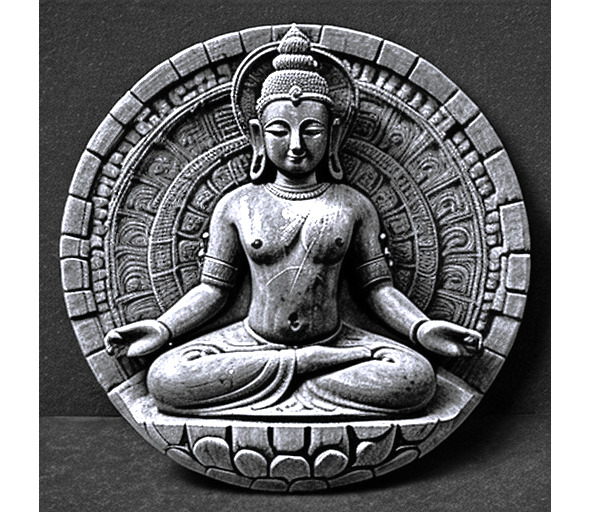
Nirvana is not just a concept or a philosophical term. It is a state of consciousness in which one attains liberation from the sufferings, desires, and illusions of the material world. It is a state of absolute calm, peace and harmony with the universe, which is described as the ultimate goal of spiritual development.
Interestingly, the concept of Nirvana, or similar states, is present in many Eastern religions and philosophical systems. In Brahmanism, it can be an understanding of Brahman, the absolute reality that is above all. In Hinduism, it is Moksha, liberation from the cycle of birth and death. In Taoism, it is the achievement of harmony with Tao, the eternal path of the universe. Even in Confucianism and Shintoism, although Nirvana is not explicitly mentioned, there are ideas about harmony with the natural order and the attainment of a higher spiritual state.
This suggests that the desire for enlightenment and understanding the depths of one’s own consciousness is a fundamental part of human nature. It is common to all cultures and civilizations, and each culture makes an invaluable contribution to the overall understanding of this unique state of consciousness.
The story of Nirvana, then, is the story of our own pursuit of self-discovery and self-realization. It is a path that each of us can take by examining both the outer teachings and the inner experience.
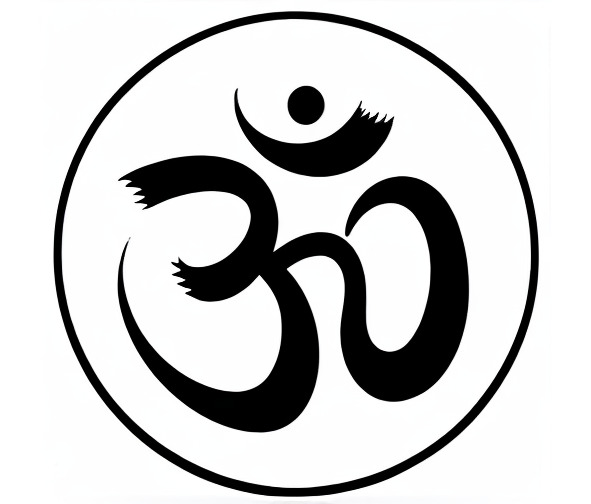
Advaita Vedanta is one of the most profound and influential philosophical teachings that originated in India. This teaching offers a unique perspective on the nature of reality and consciousness, offering a radically non-ambivalent view of the world and our place in it.
At the heart of Advaita Vedanta is the idea that true reality is the unity of existence, where there is no separation between the individual self and the universe. It is a state of Enlightenment when one realizes that one’s individual consciousness, the Atma, is inseparable from the absolute reality, Brahman. In this understanding, the world that we perceive through our senses and mind is an illusion or Maya created by our limited perceptions.
Caesar Teruel, speaking of the paradox of our thinking, emphasizes how beliefs shape our perception of reality. We tend to believe that we think, and our thoughts create a picture of the world in which we live. But Advaita Vedanta urges us to overcome this limited perception and see the world as it really is — one and indivisible.
This teaching offers a path to liberation from illusions and false ideas about oneself and the world. It teaches that realizing our true nature as a part of Brahman opens the way to deep inner peace, wisdom, and harmony. Understanding that we are not separate from the world, but an integral part of it, can radically change our experience of life.
Advaita Vedanta is not merely a philosophical teaching; It is a practical path to self-knowledge and enlightenment. It offers us the tools to break down the walls that we build between ourselves and reality, and to achieve a state in which we can live in full accordance with the true nature of our existence.
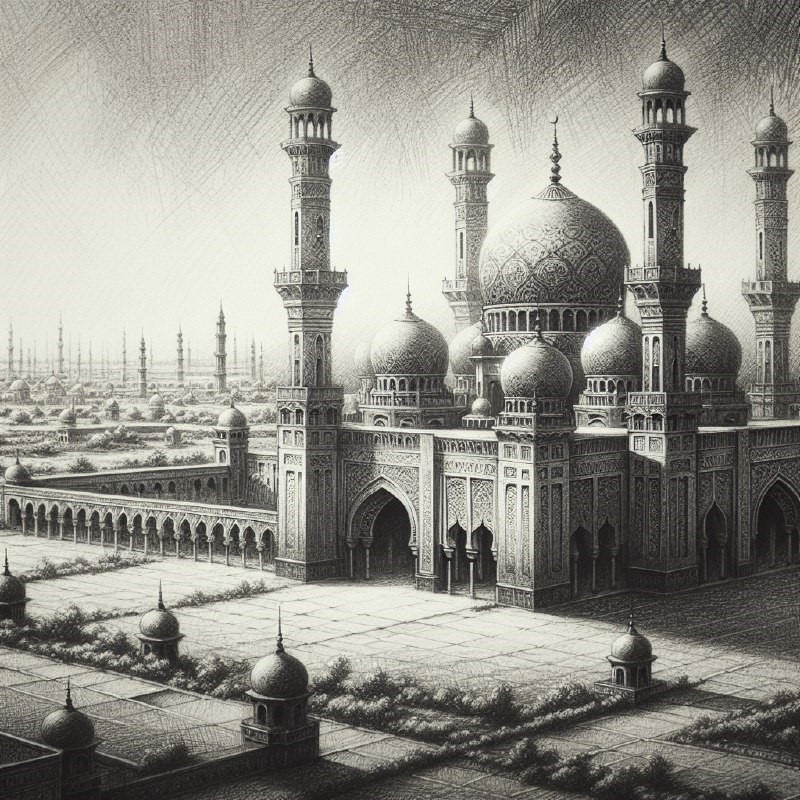
For many brought up in the traditions of Western logic and empiricism, the philosophy of Eastern spiritual teachings may seem incomprehensible. However, this is precisely where its unique value lies — it opens the door to other dimensions of understanding and perceiving the world. Islam’s contribution to world culture and science, especially through the spiritual teachings of Tasawwuf, is an example of such deep understanding.
Tasawwuf, or Sufism, with its practices aimed at achieving the state of Fana, offers a path to enlightenment that goes beyond rational thinking. It is a journey into the depths of the soul, where the personal “I” dissolves into the infinity of being, and a person gains a true understanding of his essence and connection with the entire universe.
Islam, which has enriched the world with knowledge in medicine, mathematics, chemistry and many other sciences, proves that spiritual development and scientific progress can go hand in hand. The Sufi understanding of the world, where every being and phenomenon is a reflection of a single divine principle, has inspired many scientists on their path to discovery.
It follows that Fana, as the highest stage of spiritual enlightenment in Islam, can be a key factor that inspires deep reflection and leads to the insight that underlies great scientific discoveries. This is a state when the mind is freed from the bonds of limited perception and begins to see the world in its true, multifaceted form.
In the light of these teachings, we can see that the path to enlightenment and understanding of ourselves and the world is not limited to one culture or religion. It is the universal aspiration of mankind for knowledge, wisdom and harmony with the world around us.

Throughout the history of mankind, religions have not only preserved spiritual traditions, but also contributed to the enlightenment and intellectual development of people. They were the custodians of knowledge and wisdom, helping generations to strive for a deeper understanding of the world and of themselves.
By reflecting on the past, we can see how ancient teachings such as Taoism influenced the development of civilizations and cultures. In China, where Taoism emerged between the 4th and 2nd centuries BCE, it offered a unique path to harmony with nature and understanding the laws of the universe. Taoism is not just a religious teaching; it is a philosophy of life that teaches us to live according to the Tao, the natural order of things.
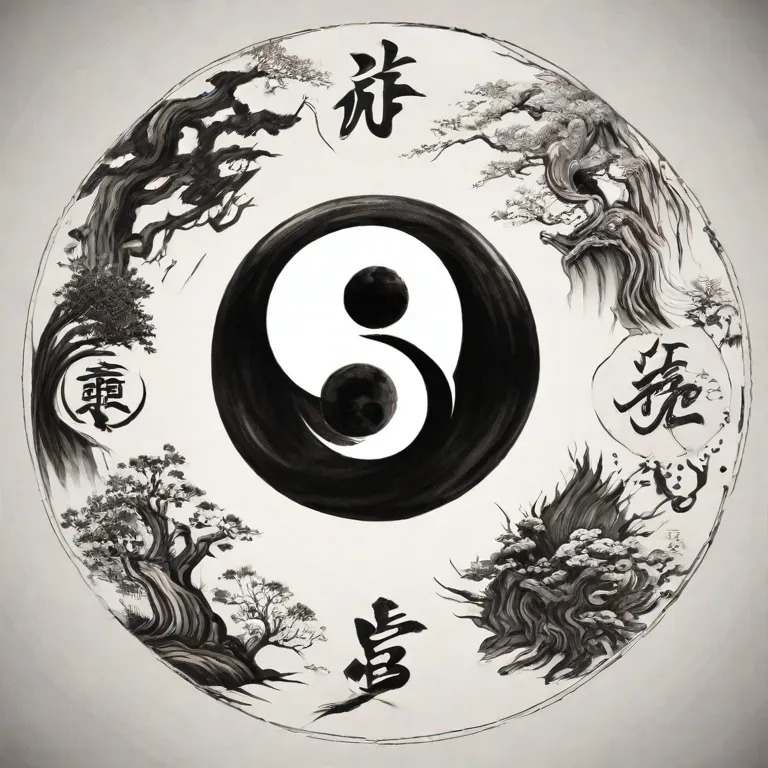
According to Taoist philosophy, true bliss and enlightenment are not achieved through external actions or the pursuit of material goods. Rather, they are in deep self-knowledge and awareness of their connection to the cosmic order. Meditation and inner contemplation become the tools with which a person can reach the state of Nirvana, understanding that all life is a game of illusions, and that the true reality lies beyond the visible.
Taoism, like many other Eastern teachings, encourages us to seek wisdom not in the external world, but within ourselves. This is the way to return to the origins, to the true nature of our existence, where each person can find his place and the meaning of life.
By studying the history and philosophy of Taoism, we can see how ancient teachings continue to influence our modern understanding of the world and our place in it.

Japan, a country where ancient spiritual traditions are harmoniously intertwined with innovations, has given the world many outstanding scientific discoveries. This cannot be a mere coincidence, given the deep roots of Zen Buddhism in Japanese culture, whose teachings are aimed at achieving Enlightenment and developing the mind.
The etymology of the name Zen goes back to the Sanskrit-Pali term “dhyana/jhana” (Sanskrit. “concentration, contemplation”), meaning”(mental) concentration” — the Mind of the Buddha.
Zen, with its emphasis on meditation and contemplation, seeks to realize the true nature of the mind. Satori, or enlightenment in Zen, is a moment of immediate insight, when a person perceives reality as it is, without embellishment and illusions. It is a state of clarity and awareness, when all artificial boundaries between the self and the surrounding world disappear, and a person gains a deep understanding of his own essence.
This approach to life and learning can be key to developing the creative and analytical thinking necessary for scientific discovery. Perhaps it is because of their deep inner concentration and the ability to see beyond surface phenomena that Japanese scientists have been able to reach such heights in science.
Zen is not just a teaching or religion; This is a path to self-knowledge, which can lead to fundamental changes in the perception and understanding of the world. He teaches us that every moment is an opportunity for insight, for deep understanding, and for true knowledge.
By studying the impact of Zen Buddhism on the culture and scientific achievements of Japan, we can see how spiritual practices affect the development of intellectual abilities and how they can become a powerful tool for achieving breakthroughs in various fields of knowledge.
Master Engo “The great truth of Zen lives in everyone. Look inside and look for her there without needing anyone’s help.”
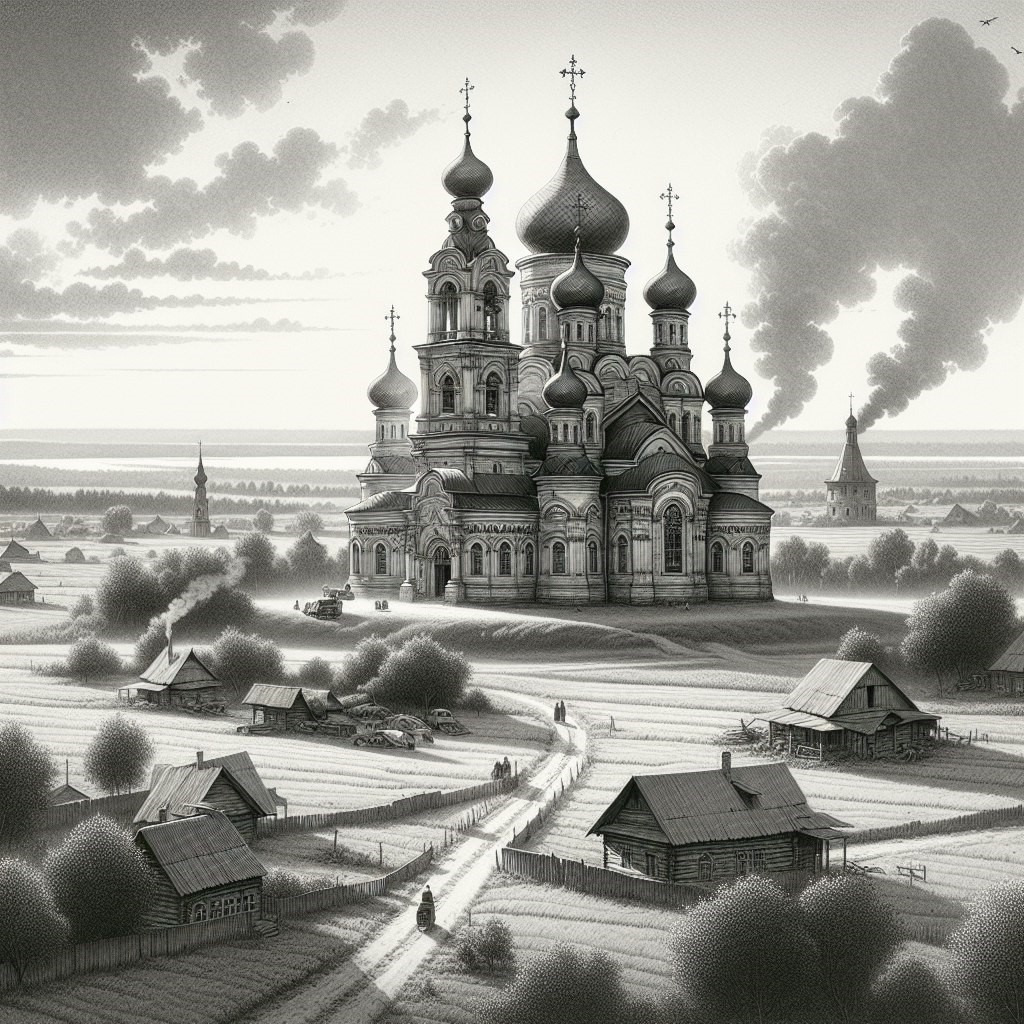
In Christianity, especially in the Orthodox tradition, Hesychasm represents the path to inner peace and understanding through prayer and solitude. This practice, which has its roots in the depths of centuries, was developed to help believers achieve deep spiritual enlightenment and closeness to God.
Hesychasm is based on the idea that through silence, solitude, and constant prayer, a person can clear his mind of worldly worries and aspirations, distract himself from external noise, and focus on an internal dialogue with God. The Jesus Prayer, repeated incessantly, becomes not only a form of conversion, but also a means of self-knowledge and self-purification.
The goal of the hesychast is to achieve a state in which he can see the light of Tabor — the brightness that, according to the Gospel, the apostles saw on Mount Tabor during the Transfiguration of Christ. This vision symbolizes the encounter with the Divine and deification, the process by which man becomes like God in his qualities and actions.
Hesychasm is not just a spiritual practice, but also a mystical path that leads to a deep transformation of the personality. He teaches that true enlightenment and understanding come not through external achievements, but through inner work on oneself, through a constant striving for spiritual perfection.
Hesychasm contributes to a variety of spiritual practices aimed at achieving enlightenment. He emphasizes that the path to true understanding and harmony with the world lies through silence, prayer and self-denial. This teaching offers each person the opportunity to explore the depths of their own consciousness and find the light that will illuminate the path to spiritual fullness.
Modern brain research using neuroimaging techniques allows us to look into the areas where our deepest feelings and experiences are formed. The limbic system, located deep in our brains, is a kind of repository of emotions, memories, and aspects of personality. It is like a boundary where instinctive reactions and higher cognitive functions converge.

Interestingly, the word ‘limbo’ in Latin means ‘edge’ or ‘limit’, and this is reflected in the religious concept of limbo, which was used in medieval Christian theology. Limbo is described as an intermediate state where souls who have not made it to heaven are waiting for the Day of Judgment. It is not a place of punishment, but rather of purification, where souls shed illusions and conceits in order to prepare for eternal life.
Perhaps this is a coincidence in the names, but if we draw a parallel between the limbic system of the brain, which stores and manages our emotions and personality, and the concept of Limbo as a place of spiritual cleansing, we will notice a lot of similarities. Both concepts reflect the boundary between the habitual state of awareness and the transition to a higher level of consciousness.
In the Christian tradition, the idea of Limbo serves as a reminder that each person must go through a process of introspection and purification in order to achieve true understanding and harmony with the Divine. It is a process that requires us to let go of worldly attachments and let go of limiting beliefs.
In this context, hesychasm and other Christian practices of spiritual cleansing can be seen as pathways to attain enlightenment, similar to what is described in Eastern traditions. They offer us methods to achieve deep inner peace and understanding that can lead to the transformation of our consciousness and life.
Thus, in Christianity, as in many other religious traditions, the concept of enlightenment and spiritual purification plays a central role, pointing to the ability of each person to achieve a higher state of consciousness and harmony with the world around them.
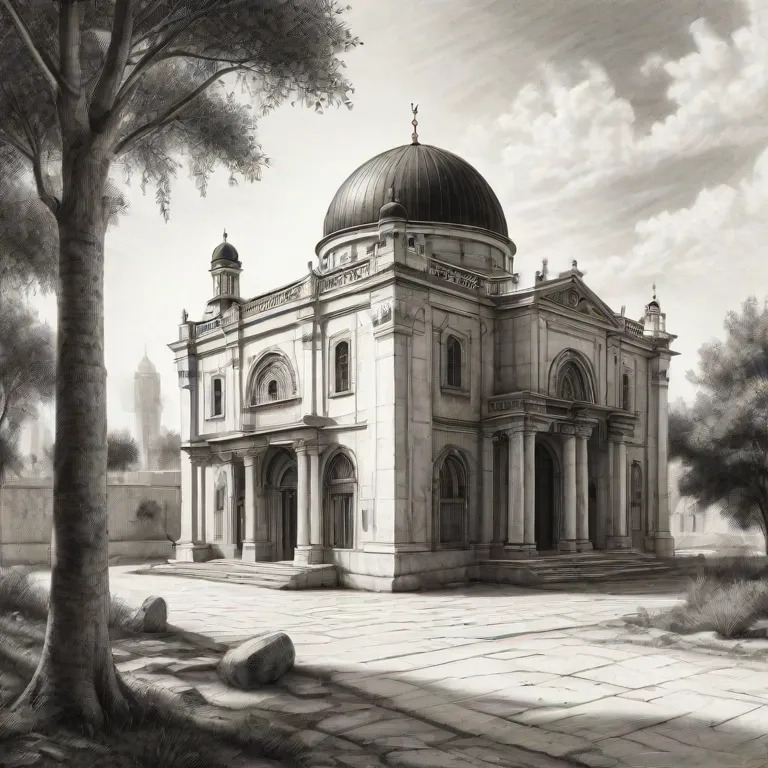
In Judaism, Kabbalah is a deep and complex system of esoteric teachings that explores the inner aspects of the Torah and the nature of the universe. Kabbalistic practices and meditations are for those who seek to achieve a deeper spiritual understanding and reconnection with the Divine.
One of the key practices in Kabbalah is Kavanot, a meditative focus on sacred texts and divine names. These meditations involve not just the mechanical repetition of words, but a deep inner immersion in their meaning, which allows the practitioner to rise to a higher level of spiritual awareness.
The names of the angels and the aspects of the Divine that occur in Kabbalistic texts are seen as symbolic ‘keys’ that open access to the higher spiritual worlds. These names and symbols guide the soul on its journey through the ascending levels of the spirit world, leading to the possibility of encountering the Divine.
Kabbalistic teachings and practices offer a unique path to spiritual enlightenment that requires the practitioner not only to know and understand, but also to have a deep personal commitment. This is a path that can lead to the transformation of not only the inner world of a person, but also his interaction with the outside world.
Kabbalah in Judaism, like other mystical traditions, offers spiritually elite practitioners the tools to attain enlightenment and ascent of the soul. These spiritual techniques allow one to explore the depths of one’s consciousness and strive for an elevated state where one can experience oneness with the Divine and understand the true nature of one’s being.
Exploring the history of science and the great minds who have made invaluable contributions to our understanding of the world, it is impossible not to note the significant influence of Judaism, this ancient tradition has not only nurtured generations of outstanding scientists, but also formed the fundamental principles of the spirit of inquiry and critical thinking that underpin modern science.
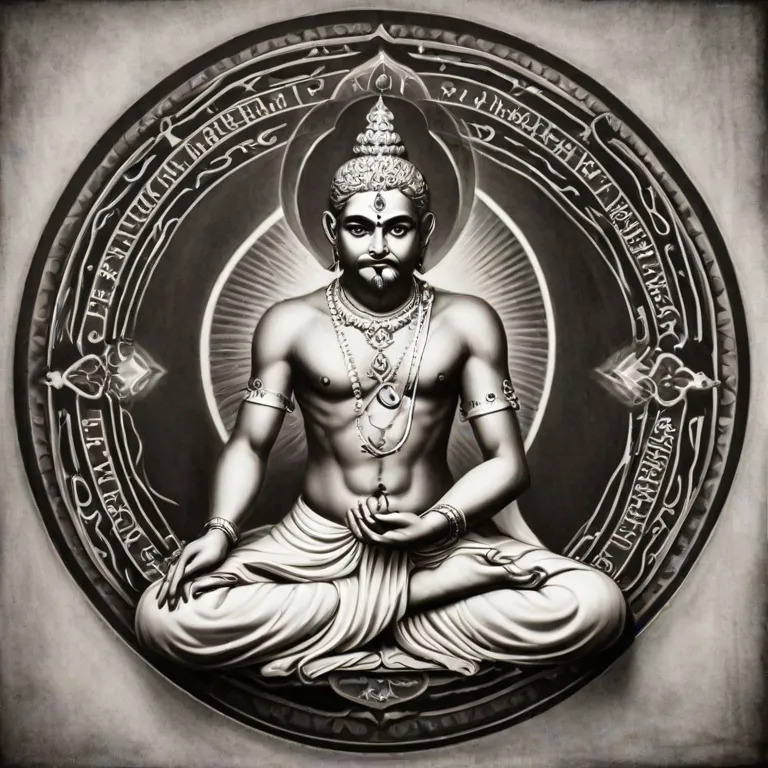
Kaivalya, as described in the Upanishads, is the culmination of the spiritual path in yoga — it is a state of absolute freedom and independence from all material and mental bonds. In this state, the yogi realizes that his true nature is pure consciousness, not limited by time and space, not connected to the physical body and mind.
The Kaivalya Upanishad, one of the ancient texts dating from the first millennium BCE, details the path to this higher state. A person who has attained Kaivalya experiences deep self-awareness and oneness with all things. He sees himself not as a separate being, but as an integral part of the universe, eternal and unchanging.
This state of enlightenment in yoga is not just liberation from suffering or the attainment of peace and tranquility. It is the full realization of one’s spiritual potential, the realization of one’s true self, which exists beyond all conventions and limitations. Kaivalya means to live in complete harmony with one’s own nature, to be completely self-sufficient and independent of external circumstances.
The path to Kaivalya is the path to the deepest understanding of oneself and the world, the path to the realization that the true essence of a person is consciousness, which is the source of all that exists. This understanding brings with it not only peace and harmony, but also a deep sense of freedom and joy from the realization of one’s eternal nature.
Kaivalya is eternal, all-pervading, formless, unmanifested, infinite, incomprehensible, without beginning, middle and end, which is consciousness. He is the life force, the breath, the fire, and the moon. Eternity is him, everything that has arisen, was and will be is him.
Kaivalya — absolute liberation, non-attachment to something or someone, self-sufficiency. Perfection, that is, the full disclosure of one’s spiritual potential and the realization of one’s destiny as a rational being.
Kaivalya in yoga is not just a goal that the practitioner strives for. This is a state that transforms all life, making it complete, meaningful and free from illusions. “Know it, find liberation, there is no other way’ — these words from the Upanishads remind us that true enlightenment is available to anyone who seeks it, and that this journey is in itself the path to liberation.
In today’s world of rapid changes and constant stress, yoga is becoming not just a trend, but a necessity in everyday life. More and more of the world’s leading companies are incorporating the practice of yoga into their employee development programs, recognizing its potential to improve concentration, increase energy levels, and reach new mental heights. This ancient practice not only helps to strengthen the body, but also cleanses the mind, paving the way for innovation and creativity.
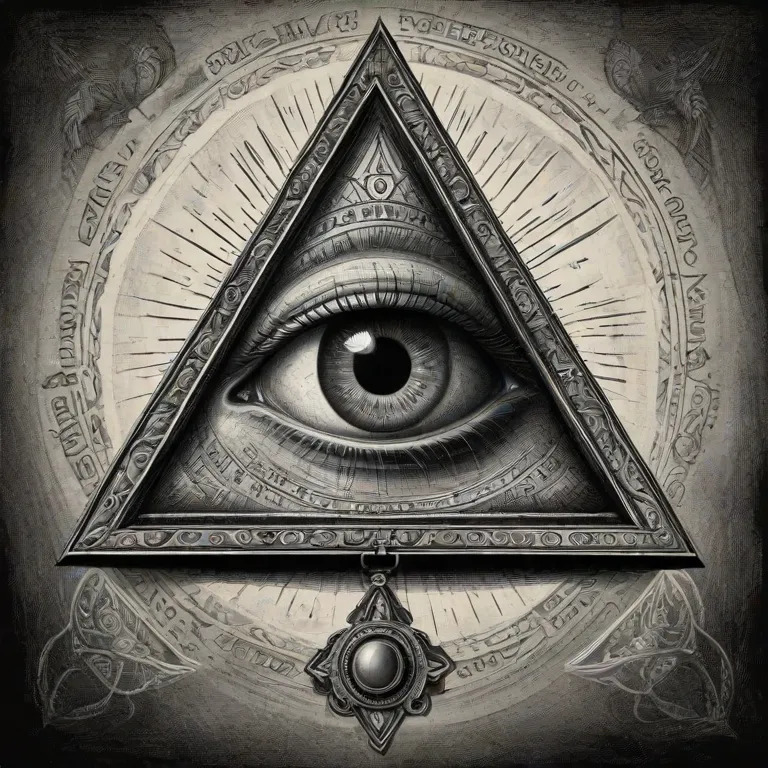
“The image of the All-Seeing Eye in a triangle, found in various cultures, is often interpreted as a symbol of enlightenment and spiritual vision. This symbol is a metaphor for deeper perception, the ability to see beyond the physical world and understand hidden truths.
In many traditions, the All-Seeing Eye is associated with divine observation and omniscience. It symbolizes the universal consciousness that is able to see all times and spaces, past and future, and combines the wisdom and understanding of the Architect of the Universe.
This symbol may also reflect the concept of the ‘sixth sense’ or intuition, which goes beyond the ordinary senses and allows a person to perceive electromagnetic fields or other subtle energies that are not available to the ordinary senses of perception. This ‘sixth sense’ can be associated with intuitive understanding, premonitions, or even psychic abilities.
The all-seeing eye, therefore, becomes a symbol of the desire for enlightenment and the search for a deep understanding of the world. It reminds us that there are higher levels of consciousness available to those who seek spiritual growth and self-knowledge. This symbol encourages us to open our inner eyes and see the world in a new light, realizing our connection to the larger reality and our role in the fabric of the universe.
In all the teachings, we can also observe that the word liberation is often mentioned. What exactly does liberation come from? Let’s try to analyze this issue in more detail.
Liberation, or ‘moksha’ in Hinduism, ‘nirvana’ in Buddhism, ‘fana’ in Sufism, and similar concepts in other traditions, often indicate a process of getting rid of the illusions and limitations that our own perception imposes on us. It is liberation from the chains that shackle our ability to see the world as it really is.
The moment we abandon the subjective perception of the self, a kind of ‘resetting’ of our personality occurs. All the beliefs, knowledge and worldviews that we have accumulated, often under the influence of the surrounding society, can be revised. This is not just a change in views, it is a deep rethinking of the very essence of our “I”.
When a person is freed from these external and internal limitations, he begins to see reality without filters, without the bias that acquired knowledge creates. This state can be compared to the “resetting” of the personality, when the old parameters of character and ego give way to a new understanding.
This process of liberation opens the door to the possibility of consciously choosing the qualities and characteristics that we want to develop in ourselves. We begin to realize that the limitations we thought were inevitable were actually of our own making. And when we free ourselves from these self-imposed limitations, we open ourselves up to new possibilities and abilities that previously seemed unattainable.
Thus, the path to liberation in spiritual teachings is not just a path to personal happiness or peace. This is the path to deep self-knowledge, to the realization of our true nature and to the discovery of the infinite potential of our mind. When we become “Nobody’, when we give up our attachment to a particular image of “I”, we gain the freedom to be ‘the All’, which opens up unlimited horizons of knowledge and self-realization.
At the heart of the various spiritual practices is the desire for transcendence of the individual, for overcoming the limitations of the ego and achieving a state of oneness with the world. This is the way to realize that our true self transcends individual existence and is connected to a larger reality.
Namaz in Islam, prayer in Christianity, meditation in Buddhism and yoga — all these practices are aimed at helping the practitioner to distract himself from everyday worries and immerse himself in a deep inner space. In these moments of solitude and concentration, one can experience a sense of loss of self, witness one’s own consciousness, and feel connected to one’s true nature.
This process of escaping the ego does not mean denying oneself or one’s individuality. Rather, it is the recognition that our personality is only a part of our existence, and that there is a deeper level of being beyond the ego. This understanding allows us to experience moments of deep connection with the world around us, to feel part of something bigger, and to gain a broader perspective on life.
Spiritual practices that lead to an altered state of consciousness open the way not only to spiritual awakening, but also to the development of the mind. They teach us to see the world not through the narrow lens of the ego, but through a broader and more integrative perception that unites us with all that exists. This is the way to understand that we are not just separate individuals, but also an integral part of the universe, capable of deep self-knowledge and transformation.
When we ask ourselves about the primary sources of spiritual teachings, we are confronted with the deep mystery of human experience. Who were the people who, thousands of years ago, were able to delve into the mysteries of consciousness and reason, opening the way for us to enlightenment and self-knowledge? They were sages, shamans, prophets, and mystics who may have experienced deep spiritual insights and witnessed the greater potential of the human mind.
It is possible to assume that these founders were people who were not just ahead of their time, but were also able to connect with some universal wisdom that transcends the boundaries of time and culture. They were able to achieve states of consciousness that allowed them to see the world from a completely different angle and pass on their knowledge to future generations.
Modern science, with its discoveries in neuroscience, psychology, and cognitive science, is beginning to confirm what ancient teachings have been describing for centuries: that the human mind has enormous, not yet fully realized potential. We are beginning to understand that our brains are capable of adaptation and change, and that we can develop our cognitive abilities and spiritual awareness much further than previously thought.
At today’s level of neuroscience, spiritual teachings can be seen as a kind of ‘treasure map’, pointing to possibilities that have yet to be explored. They offer us not only methods of self-development, but also the idea that humanity can evolve towards a higher level of awareness and understanding.
Perhaps it is thanks to these ancient teachings that we will be able to continue our path of development as a species and as a civilization, opening up new horizons for the mind and spirit. And perhaps we will see the day when humanity as a whole will reach a level of enlightenment that today seems to us only a distant dream.
It is religions that at all times have been directly involved in the enlightenment of society, and only in modern times, separate scientific trends have been formed from these teachings.
The concept of the role of religion in the development of education and science is based on the historical fact that many ancient religious institutions were centers of learning and knowledge. In different eras and in different cultures, religious institutions have played a key role in the preservation and dissemination of knowledge, as well as in the education of future generations.
In the ancient world, temples were not only places of worship but also served as centers of learning. Priests were often among the few literate people and were engaged in teaching writing, astronomy, mathematics and medicine. For example, in ancient Egypt, temples were places where future scribes and administrators were trained, and scientific research was conducted.
In India, Vedic schools known as gurukulas provided education based on scriptures and included the study of philosophy, literature, logic, and various sciences.
In Judaism, synagogues and yeshivas (religious schools) were centers of Torah and Talmud study, where instruction included not only religious texts, but also logic, ethics, and philosophy.
The Islamic world in the Middle Ages gave rise to madrasas, educational institutions where not only religious sciences were taught, but also many secular subjects, such as mathematics, astronomy, medicine, and philosophy. The Baghdad House of Wisdom, for example, was a famous center of translation and scholarship, where scholars of different religions and cultures gathered.
Christian monasteries in Europe preserved and copied manuscripts, taught literacy, and were the custodians of knowledge during the Dark Ages. Later, universities, many of which arose from monastic schools, became centers of scholarship and scientific research.
Religious institutions in many cultures have been the forerunners of modern educational institutions and have played an important role in the development of science. Not only did they impart knowledge, but they also fostered critical thinking and scholarly dialogue, which ultimately led to the emergence of the scientific method of education and the development of modern academic disciplines.
Today, we are on the verge of a new era where modern science and ancient knowledge can interact and complement each other. The possibility of combining the scientific method with the wisdom contained in religious and spiritual teachings opens up unprecedented opportunities for the further development of humanity.
This unification can lead to a new understanding of the nature of reality, consciousness, and human experience. It can help us better understand the complex relationships between mind and matter, between the individual and the universal, and between science and spirituality.
For many centuries, mankind has accumulated quite enough knowledge and it is time to build bridges between the ancient knowledge stored in religions and the discoveries of modern times. This synthesis can open up new horizons for human development and help us build a more harmonious and conscious society where knowledge benefits everyone.
By combining the knowledge of modern neuroscience with ancient spiritual teachings, I found amazing parallels and interconnections. Neuroscience provides us with a detailed understanding of how our brains work, how thoughts and emotions are formed, and what processes underlie our consciousness. Ancient spiritual traditions, on the other hand, offer practices and insights that aim to expand consciousness and achieve an enlightened state.
Combining these two fields of knowledge allowed me to see that enlightenment, or an altered state of consciousness, is not something abstract or unattainable. It is a real-world condition that has specific neurobiological correlates. Such an understanding opens up new prospects for psychology, in general, all medicine and personal development. It shows that we can consciously influence our brains by using ancient practices to achieve a healthier, more balanced, and more mindful state.
This association also emphasizes the importance of a holistic approach to human development, where science and spirituality do not oppose each other, but complement and enrich mutual understanding.
Modern neurophysiology shows that meditation and spiritual practices can lead to noticeable changes in the brain, such as an increase in gray matter in certain areas, improved connections between different brain structures, and a change in activity in neural networks. These changes can help improve cognitive function, emotional regulation, and awareness.
Spiritual practices can also affect our ability to learn, our perceptions, and how we interact with the world around us. Thus, when we develop our minds through religious practices, we not only change our current state of consciousness, but we can also contribute to the long-term development of the human species.
There is a direct correlation: religious and spiritual practices affect the development of the mind, which leads to neural changes in the brain. And the inverse relationship: physiological changes in the brain can stimulate changes at the structural level, which in turn affects cognitive abilities and mental capabilities in general. Ultimately, spiritual practices lead a person to peace and wisdom.
Chapter 2. Personal stories of Profectum
Meetings and conversations with people who have experienced a state of altered consciousness in modern times have allowed me to see that, despite the differences in descriptions, there is a commonality of experiences in their stories. These sensations turned out to be remarkably similar to those that I experienced and to those mentioned in ancient texts and religious teachings. And if we compare modern stories with historical ones, we can see that according to the parameters of the characteristics of the sensations experienced, earlier this phenomenon of consciousness was called Enlightenment.
Traditionally, Enlightenment is interpreted as a spiritual awakening that includes elements of mysticism and transcendence. However, my observations and conversations with those who have experienced this state have shown that many aspects of the experience can have a physiological basis and are therefore amenable to scientific analysis. My hypothesis is that altered consciousness may well be a consequence of the evolutionary development of the brain, which fully explains such unusual cognitive activity.
“The nature of the mind cannot be invariably static, the brain always follows the path of constant learning and its own development. And the more the mind develops, the more proportionally its ability to find ways to expand its own capabilities increases.
It is quite logical that if it is thanks to the change in the brain that a person began his path to development, then without a doubt, further evolution is possible only in this direction.”
In order to deepen the understanding of the phenomenon of Enlightenment and make it accessible to scientific study, there was a need for a new term that would reflect both the spiritual and physiological aspects of the experience. This name should encompass not only the sensations experienced by humans, but also the potential neurobiological changes that occur in the brain.
I can imagine what difficulties the founders of spiritual teachings faced when, having outstripped evolution by several thousand years ahead, they explained the truth to their contemporaries, because even today there are no names for many things.
Or as Professor Michael Gazzaniga put it; “The most important step towards explaining the phenomenality of consciousness will be the creation of a new language for describing this phenomenon”
And since there is no scientific name for the man of the future, then let’s call him Homo profectum sapiens, which in Latin means — Man of Progressing Mind. And accordingly, the physiological state of brain change that people experience today will be called profectum (progress).
It is now easy to say that humanity is evolving from Homo sapiens to a new human species, Homo profectum sapiens.
The proposal to name the new human species “Homo profectum sapiens’ underscores the unique transformation we are beginning to witness in the modern world. This is not just evolution in the biological sense; This is the evolution of consciousness and reason. The profectum (progress) that people are experiencing today may be a sign that we are witnessing the birth of a new era in human history.
Observations of thousands of people who have experienced the state of ‘profectum’ suggest that we may be on the verge of significant changes in the structure and functioning of the brain. These changes can lead to new ways of perceiving, thinking, and interacting with the world. They can give us access to previously unexplored areas of intelligence and its capabilities.
Studying these unique cases of ‘profectum’ allows us to better understand exactly what changes occur in the brain and how they can affect our daily lives. It also gives us the opportunity to explore how these changes can be interconnected with ancient practices and teachings that have shown us the path to enlightenment and self-realization over the centuries.
In this way, “Homo profectum sapiens’ may become not just a new species in the biological sense, but a symbol of the new level of awareness that humanity is striving for. This could be the beginning of a new chapter in our history, where the development of the mind and awakened consciousness will become central elements of our existence.
In my quest to understand and describe this phenomenon, I am going to share some of the most unique and revealing stories of those who have already experienced the state of ‘profectum’. These stories not only illustrate the general features of the phenomenon we are experiencing, but also help us see the physiological trends of changes that occur in the brain.
It is difficult to give exact statistics, but according to preliminary estimates, tens of thousands of people have already experienced the profectum effect, and since all the personal stories of the experience are almost identical, it makes no sense to list them, so I will present in my opinion some of the most unique cases:
Dmitry. F. Age 15 years.
“I didn’t feel my body well, there was a feeling of peace, a kind of “levitation” — that is, the body felt as light as possible.
This state is very similar to the phenomenon of “hyper-realization” and that my brain begins to work as quickly as possible, productively, 100%. In this state, any difficult tasks were instantly solved. Apparently, a large amount of blood entered the brain, activating a significant part of the neural ensembles.
I began to be fully aware of myself, the feeling of anxiety completely disappeared, a state of complete comfort and relaxation came.
There was only a certain feeling that I could “change the world” and that I was not a separate person, but a part of this world and nothing separate.
Passing my hand, her movement seemed to me to be some kind of slides, that is? When I passed my hand near my face, I saw what had happened to it a second ago in the form of a transparent “image” that had a different time than the one I was in.
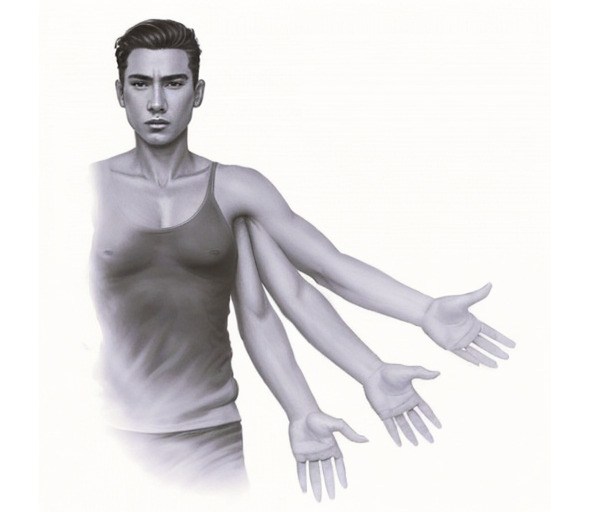
I felt what I would call hallucinatory levitation, literally I did not feel my body as some kind of mass. Very interesting.
I told my sister about this condition, that perhaps it was “hyper-realization”, she is a psychologist. Hyperrealization is a kind of spatial disturbance of perception, a state between sleep and wakefulness — a fairly similar description to what I experienced at that point in time.”
It is noteworthy that after three years, Dmitry is fond of various sciences; physics, space, futurology, the development of the mind, and wants to change the world for the better.
Pay attention to the fact that Dmitry did not have a complete transition to the pure work of consciousness, as a result of which visual images were perceived simultaneously as an accelerated and slowed down picture of the visible. That is, the visual system in our brain has two ways of perception; direct to the frontal structures and the second through the filter of the singular cortex (which stores our personality — I see, my body, my hand, etc.). The two paths of visual perception have a completely different speed — in the normal state, a person sees with a delay of 300 milliseconds to 30 seconds, and in the state of profectum, perception speeds up several times. As a result, this is why Dmitry developed such an unusual effect of a visual image with a bifurcation in time and space.
Apparently, this visual effect is an accidental coincidence, but a similar multiple depiction of hands can be found in Shaivism.
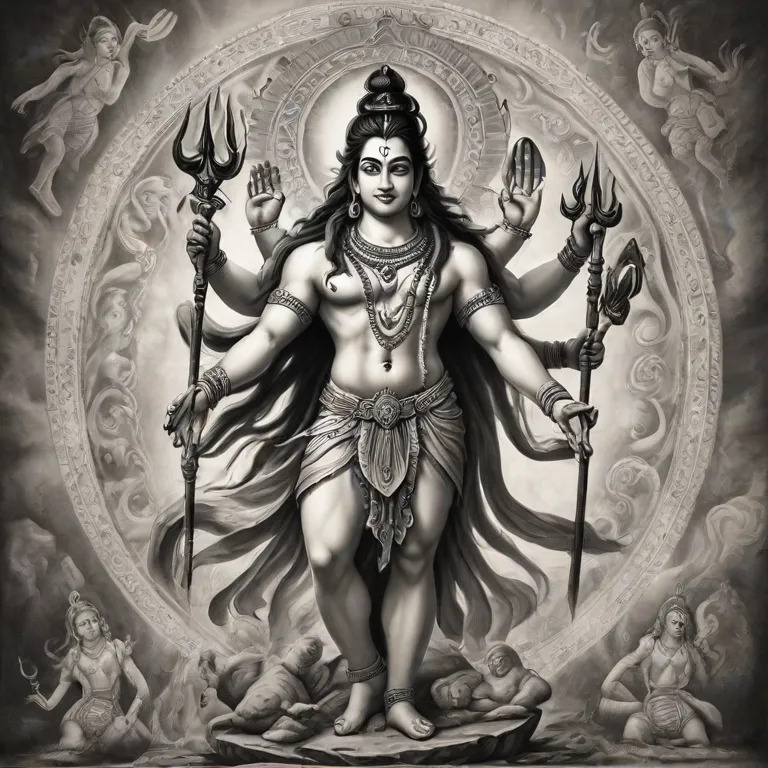
Another story of personal experience is told by Alexander V., 34 years old.
“It was summer, about 5 in the morning. Going out on the balcony and sitting on an armchair, I just listened to the street, trying not to distinguish sounds, allowing myself not to understand, but to listen, and did not notice how I listened to the singing of birds. And then the unusual happened. I no longer understood where the body was, whether it was breathing there or not, or in what position. At that moment, it was as if I was singing birds myself. Not with birds, not with sound waves, but with the singing itself. Then, a moment before, he could seem to control it or predict which one would sing and how.
I decided to ask my own question. Not words. It’s not just how you want to think and the mind expresses it in a monologue to itself, but without putting it into words, you already know what you want to think about before the thought takes shape. In fact, you don’t have to talk to yourself in your head, as it usually happens. I’m going to ask a question, and I just already know the answer. That’s what frightened my mind, as soon as I realized it, the fear of what was happening, threw me out of this state
All my life waiting for an answer from the outside and trying to find it: I did not even notice that I had already been communicating with the “voice of silence” since childhood. I began to rediscover the world around me through perception and gradually merging with it, I began to “hear” it again, to be in harmony with the world.”
Like the story of Dmitry described above, Alexander did not have a complete transition of feelings to pure consciousness, but in his case it is associated with auditory perception. The consciousness in accelerated perception had already heard the birds singing, but to the slowed personal awareness it seemed that it was predicting in an instant how the birds would sing.
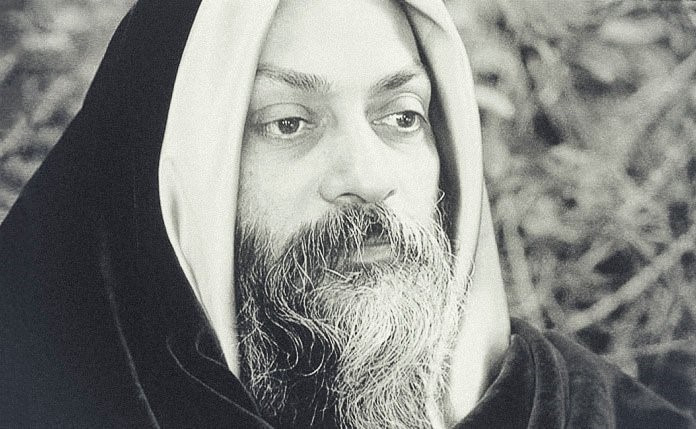
The experience is described by Osho R. 1931 — 1990.
“The condition was supernatural. For the first time, it shakes to the very depths of the soul. After this experience, you will never be the same again. It brings a completely new outlook on life, makes you completely different.
Around midnight, my eyes suddenly opened by themselves… In any case, I did not make any effort to do so. Something disturbed my sleep. I felt someone’s presence next to me, in my room. My room was very tiny, but I could feel the beating of life all around, powerful vibrations. It was as if I had been caught in the eye of a typhoon and was drowning in a majestic storm of light, joy and bliss.
It was so real that everything else became unreal: the walls of the room, the whole house, my body itself. Everything became unreal, because only now did I see the real reality for the first time.”
As in the stories of Dmitry and Alexander, Osho lost the sense of his own physical body, and his visual perception changed.
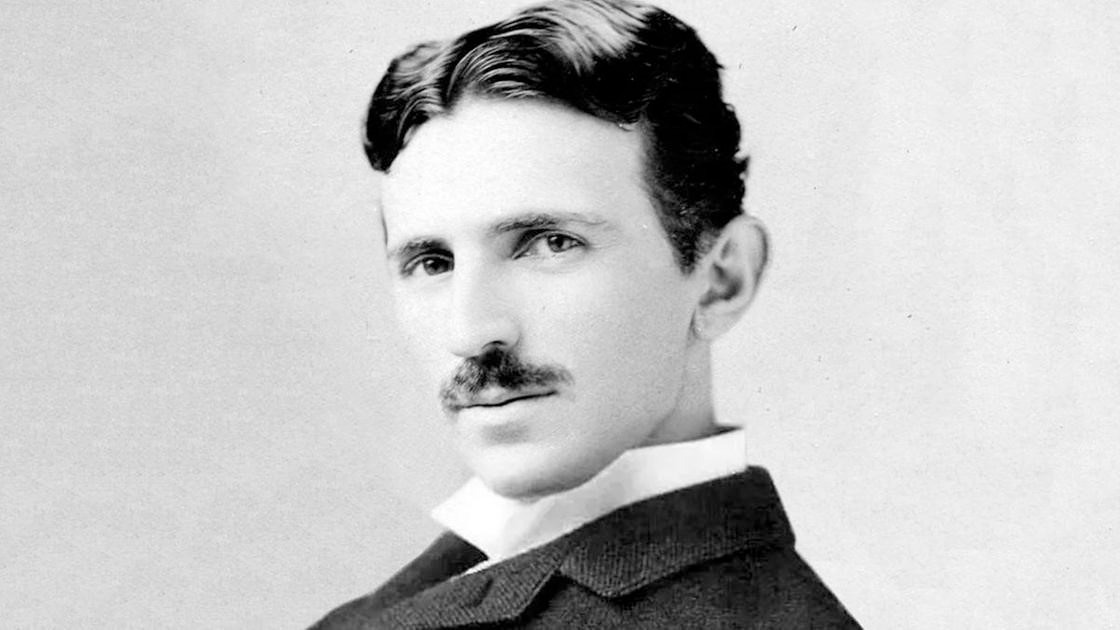
Tesla N. 1856 — 1943.
“My sight and hearing are perfect, and I dare say, stronger than those of other people. I hear thunder 250 kilometers away and see colors in the sky that other people can’t see. I acquired such a sharpening of vision and hearing as a child. Later, I developed them consciously. I learned to control emotions, dreams and vision.”
John Jacob O’Neill. 1944. In the book “Genius Overflowing. The Life of Nikola Tesla” describes the feelings experienced by N. Tesla:
“One of the symptoms was hypersensitivity. His senses had always been extremely heightened, but now his sensitivity had grown so much that it had become simply painful. The ticking of the clock, from which he was separated by three rooms, sounded like the sound of a hammer on an anvil. The vibration created by ordinary street traffic, transmitted through a chair or bench, reverberated throughout the body, and in order to completely eliminate all vibrations, it was necessary to put the legs of his bed on rubber pads. Ordinary speech was perceived as a terrible noise, and the slightest touch had a psychological effect similar to a powerful blow. The ray of sunlight falling on him felt like an internal explosion. A particularly unpleasant sensitivity in the forehead made it possible to feel an object at a distance of ten paces in the dark.”
Tesla is the most striking example of the state of profectum — a complete transition to a heightened sense of touch, visual and auditory perception.
At the moment of direct work of consciousness (frontal structures of the brain), there is a multiple acceleration and increase in the work of the mind, a colossally larger amount of information stored in the brain is involved. Perhaps it was these mental abilities that allowed N. Tesla to make more than 700 inventions.
Another unique example of the tested state of Profectum is presented by Larisa B., 60 years old.
I like to walk, having a certain long-distance goal. Outline the final destination of the walk and walk without thinking about anything. To do this, I have long developed my own way of stopping thinking. I begin to experience thoughts as an internal movement of the energy they produce. I began to stop movements in the inner space and not only from loud thoughts, but also from the idea of stopping them, and from any intention to go somewhere and achieve something. It’s just that any interest, any desire, generates a vector of movement, a subtle, barely perceptible internal tension. It is very subtle and it should be noticed. And how to remove the intention, the desire to come to something? But only if you create a state in which you have already come, have already achieved everything, have already received everything and you do not need anywhere and do not need anything. I have already implemented everything I wanted and you don’t need to do anything, explain to yourself, prove something, control… And when there is no intention, no goal, and all that remains is to stop micro-movements from current thoughts that arise spontaneously.
Attention was somewhere inside, in some center, some point from which all these mental movements arose… And as soon as the next thoughts tried to come, I immediately returned them back to the point of peace from which they arose.
In general, I did it for about 10 or 15 minutes, and suddenly I was thrown out somewhere… The whole perception has changed… Space has changed… I even stopped from surprise… Amazing silence and some kind of viviparous emptiness. The density of the air and the space around is completely unfamiliar.
Thoughts simply did not arise and their absence was completely natural. It was perceived as a very colorfully shining, as if slightly moving space. It’s like you lived in a two-dimensional world before, and in an instant you got into a three-dimensional one. Some strange additional and shining volume appeared.
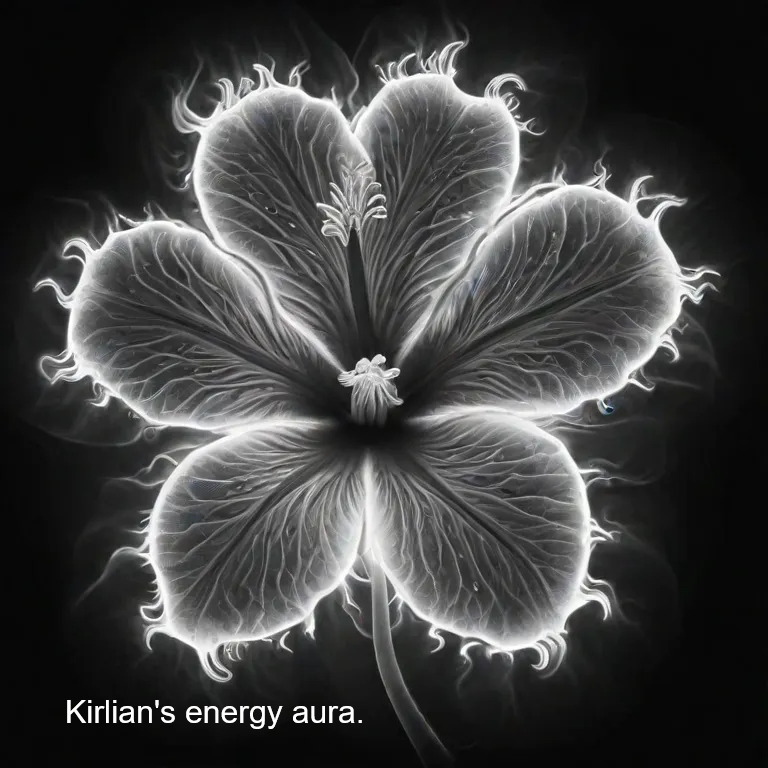
The picture is so “alive” that, in comparison with it, in the usual perception of reality, it seems that there is not enough “life”. In general, physical reality seemed to come to life… For myself, I later called it a stop in the inner world of a person.
Then a slight shadow of “me” appeared, curiosity about what was happening turned on (this, as I understand now, threw me back, but after 15 minutes). I began to look at everything carefully and even try to think… Houses are standing, trees are growing, cars are driving… Everything works, only everything is different, all the senses are sharpened.
And the exit was very gradual, soft, as if everything was slowly dissipating. Then, for about 10 days, a strong trace of the condition remained. It was incomprehensible how I had not seen this “living” thing in space before. I did not have any questions that would require answers. The answers came by themselves, I don’t know where they came from… The information also somehow came by itself…
As a person who is honest with myself and reasonable, I realized that this is certainly not “enlightenment” at all, just a deeper immersion in something, but the fact that this is a move to something more — yes. And for some reason I am sure that there is no end to this, deeper and deeper until it dissolves completely. Wei Wu Wei writes in his book “The Tenth Man” that this is not enough for liberation, and he is right. In this state, there was a “me” in which everything happened.
I came to understand how to be effective. There are no difficulties in achieving something, there are conditioning and reluctance. There was a conviction that everything is possible. The intensity of living has increased, it is possible to say: the speed has somehow increased…
Lyudmila’s story is most unique in that she was able to feel the information energy field. In contrast to the above examples, which partly have a natural basis, it has reached the state of profectum by practicing the cessation of the internal dialogue, the uninterrupted flow of thoughts. Her example proves that absolutely every person has the opportunity, with the help of meditative practices, to acquire the abilities of the mind of Nikola Tesla, to have the calmness of the Buddha, to change not only the perception of reality, but also to completely reset the parameters of the “I”, the subjective personality.
Meditation is able to reset the settings of programs acquired from early childhood, which leads to natural nature, self-knowledge, comprehension of the very basis of life and its fundamental purpose.
We are still only at the beginning of the path of upcoming discoveries, but even today, thanks to the Dalai Lama XIV, who initiated joint research with the participation of representatives of modern science and Buddhist monks, using the latest equipment, scientists are studying the effect of meditative practices on the physiological activity of the brain.
A participant in this scientific project and expeditions to India and Nepal, Professor Alexander Kaplan shared his view on meditation. “Meditation is not mysticism, it is a transformative force. You come out of it a different person. It is this transformative force that we are studying.”
This power, the professor is sure, “can make us better — more sensitive and compassionate to the world around us.”
Meditative practices certainly change the brain, making a person calmer, improve memory, thereby increasing mental abilities, but they are only the beginning. The beginning of the path of development to the phenomenal, sometimes inexplicable possibilities of the work of consciousness. It is impossible to describe something that goes beyond logical perception, so a survey of those who experienced the profectum revealed a number of cognitive changes that we are already able to study and justify scientifically.
The altered state of consciousness profectum usually occurs once and lasts an average of 5—10 minutes, in rare cases it lasts up to several hours and recurs episodically.
The age of those who have experienced profectum varies from 10 to 65 years, but there is mainly a predominance of two age categories, these are 20—25 years and 40—45 years.
In most cases, the effect occurs naturally, without meditative, spiritual or any other practices. Psychological experiences preceding the moment, depression, and health problems are often mentioned. That is, in such a case, it is the occurrence of critical life situations that serve as a stimulus for the activation of the functional activity of consciousness.
The survey of those who experienced the profectum reveals a number of common parameters of cognitive changes;
Table; 1
— Absolute peace of mind.
— Absence of “I”, ego, personality, character.
— The disappearance of the internal dialogue, the usual incessant flow of thoughts.
— A sense of pure reason.
— Increase in the amount of memory structures involved.
— The absence of a pressure filter over the perception of accumulated experience, knowledge, which contributes to a changed vision of reality.
— Acceleration and significant increase in the volume of sensory information processing (hearing, sight, touch).
— As a result of the departure from personal perception, there is a globalization of thinking, identity with the external world.
Individual symptoms are rare;
— Visual bifurcation of the external picture of the visible, simultaneous layering of ordinary and accelerated visual perception.
— Anticipatory auditory perception, advance knowledge of the external source of sound, which will occur in a moment.
— A heightened sense of touch, which allows you to feel objects at a distance.
— An increase in the speed of reactions, a change in the physical state of the whole body, the vegetative and endocrine system at the cellular level, a change in body weight, an increase in blood pressure.
Бесплатный фрагмент закончился.
Купите книгу, чтобы продолжить чтение.